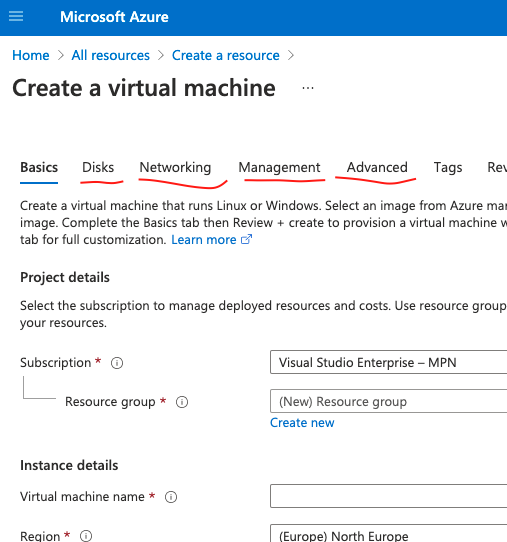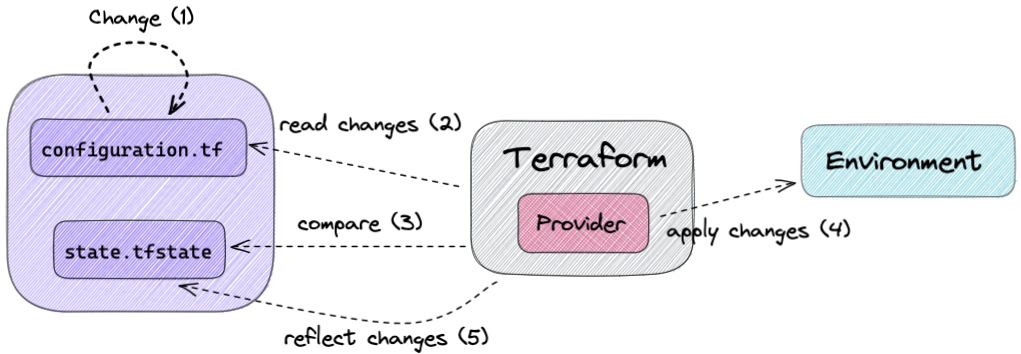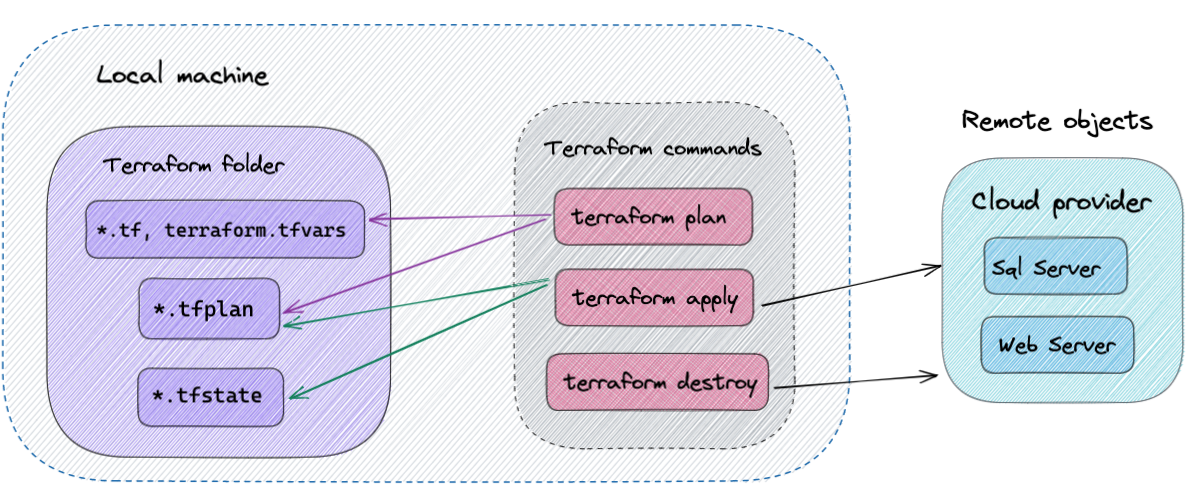Terraform playground
Terraform allows representing infrastructure as code. Or kinda code ... not like F# or C#, but more like declarative configuration files, like json, yml etc but with some support for functions, modules, etc. The language is called HCL - HashiCorp Configuration Language.
What is infrastructure?
It is where your app and its individual parts live - virtual machines, networks, load balancers, db servers, message queues etc. With growing popularity of cloud providers like Azure, there have appeared certain new resources like web app, cosmos db, storage account etc.
A common way of managing infrastructure is manual intervention via some sort of GUI (all of us have at least once logged in to a production server to make a "small" change), writing custom configuration tools that setup everything specifically for your app etc. All of it can become error-prone, no one knows why a change to the environment has been made, why stuff just stopped working, which leads to hours of troubleshooting on the production servers.. fun stuff 😱
With modern cloud providers, manual configuration would be for example going to https://portal.azure.com/ and clicking through the UI to create a virtual machine:

Goal
- Reproducible infrastructure. Dev, stage, prod environments are consistent, easily reproduced and tested. Stop logging into your server and tweaking some settings or installing some software - you won't be able to reproduce it later and won't know why stuff broke.
- Manage infrastructure state in a declarative way. If you need to make changes to an existing configuration, you don't need to think about how to make or what's already present. Imperative way would look like this: if X is not installed - fetch it from Y and run the installation, if Z setting is not applied - install A and set the setting etc. You make a change in the configuration, specifying what you want and terraform will compare the current state and apply the change if necessary (sometimes recreating resources if the change is substantial).
- Increase automation. Apply infrastructure changes as part of the deployment process. Minimize human interaction.
TL:DR;
You don't want to use GUI (or other configuration tool) to do infrastructure because:
- you can't track what changes are made overtime,
- you can't easily reproduce them elsewhere,
- you can't easily revert them if something goes boom 💥
- can't have it as a deployment step.
You want to use infrastructure as code to:
- track changes to the infrastructure in
git, - share and collaborate with others,
- recreate the same environment easily many times,
- revert changes easily if something goes wrong,
- make changes easily,
- automate changes to the infrastructure during deployment.
You tell terraform what the desired state of the infrastructure is and it will make it happen.
How it works
You install terraform on your machine (fun fact - it is written in Go) and run terraform commands in a terminal.
You tell terraform what you want your environment to look like by writing your configuration in .tf files in some folder on your machine. The real state of the environment that corresponds to the configuration is tracked in a terraform state file and acts as a source of truth. When applying changes to the configuration, terraform will use the current state file to know what changes to make in the environment so that it matches the new configuration.
Do not bypass terraform by changing your environment via GUI or elsewhere, terraform state file won't match the actual configuration!
You run terraform commands in a terminal to apply changes to the configuration. Commands:
plan- reads current state, compares to the configuration, creates a plan of changes (preview of the actions),apply- executed the action proposed in the plan on remote objects,destroy- delete all remote infrastructure for the configuration.
Provider
Terraform can work with different cloud platforms - Azure, Amazon, Digital Ocean, etc. Code you write will differ depending on the cloud platform, since they usually have their own resources and rules for managing infrastructure specific for that platform.
Terraform itself is agnostic of the underlying platform, but for managing remote objects on that platform it needs to know how to interact with it - in other words how to call the platform's API to create/modify/delete resources. This is done via terraform plugins called providers.
Usage with Azure
First of all, you need an azure subscription. You also need to install Azure CLI to authenticate into azure when running terraform. To login run:
az login
